| | This week I am speaking withDr. Jay Leavitt, founder and Investment Strategist for the Primata Funds. Prior to the Primata funds, Jay owned and managed Grabthecashanddash.com, a website that specialized in financial newsletters. He has a Ph.D. in applied mathematics and spent twenty years as the director of academic computing at SUNY, Buffalo. So, what's in your library Jay? 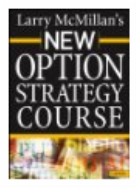 New Option Strategy Course by Lawrence McMillan - This is an excellent primer for trading options. What I found most interesting about the book is that it teaches how to visualize the behaviour of options. It showed me how to combine graphic constructs to build option strategies. 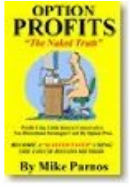 Option Profits: The Naked Truth - Profit Using Little Known Conservative Non-Directional Strategies Used by Option Pros. by Mike Parnos - Mike writes a syndicated column called The Couch Potato Trader. He writes in a very personable style and adds humor to his writing. One of his more lively quotes is "God gave man two ends - one to sit on and one to think with. Ever since then, man's sucess or failure has been dependent on the one he useed most." In this book, he talks about how to handle options in general, and iron condors in particular. 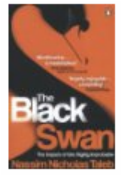 The Black Swan - The Impact Of The Highly Improbable by Nassim Nicholas Taleb - Nassim is a professor of risk engineering at NYU. I believe a lot of what he has to say about risk. In fact, I am a member of the Carolina Black Swan Group, an investment/trading group that meets once a month to discuss issues brought up within the book and related topics. I will be presenting my fund's strategy to the group at next month's meeting. 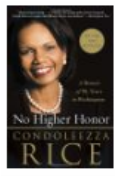 No Higher Honor: A Memoir Of My Years In Washington by Condoleezza Rice - I recommend the audio version because it is read by Condoleezza. While I strongly disagree with her party's politics, I highly regard her ethics and opinions. She records her experiences as a young black girl in the segregated South and she has based her life on taking the best out of her past. One of the highlights of the book is her reaction to a personal slight by then President Bush. Although she and Bush had mutual respect for one another, when slighted she did not fail to explain to him the slight, even though it occurred in the oval office. 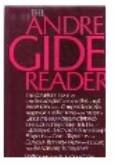 The Andre Gide Reader by Andre Gide - To be frank, this is not the Andre Gide book that I read. When I was in high school and college I took french and the classes often had collections of short stories by Andre Gide. After finishing graduate school, I became a Fulbright scholar at the University of Pisa and they immediately asked me to teach a course. I accepted and then realized that the course was to be taught in Italian. I managed to get through the semester by bastardizing my French, much of which came from text books by Andre Gide. The experience had a huge impact on my life, and I will always have fond memories of my Andre Gide text books. I challenge you to find anyone else who can honestly say that! Thanks Jay. As always, you can buy the books Jay mentioned in the Sniper Book Bin Sign up for The Sure Shot Letter, my monthly newsletter. As an added bonus, I will throw in access to my blog, The Daily Kill Sheet. The Sure Shot Letter provides long-term investment ideas on a monthly basis, while The Daily Kill Sheet provides short-term trading ideas twice weekly. |
0 Comments
Part II - Q&A With Samuel Eisenstadt...One Of The Founding Fathers Of Quantitative Analysis5/6/2013
Special Meeting of QWAFAFEW, New York April 16, 2012 Question: Asset allocation models used to include just stocks and bonds or stocks, bonds and cash. Now we see institutions and pundits talking about allocations to foreign developed markets, emerging markets, currencies, gold, commodities and other asset classes; What are the challenges in trying to model so many asset classes? Are we trying to make the world too complex? Answer: To start, lots more data are required as well as observations. With foreign markets, quality of the data becomes questionable and the consistency of the data from country to country raises doubts. I'm sure that powerful computer programs will be developed to manage these problems, however. Question: Amid all the discussion and debates about indexes and indexing, Value Line developed its own index of the market. Could you shed some light about how that came about and what things you learned after launching the index? Answer: Some time in the early 1950's Value Line developed a geometric index of the stocks in the survey at the time. Why a geometric index? Keep in mind that from Value Line's standpoint each company was a separate report, and each company was equally important. In getting a picture of the "typical" stock, we sought an index that treated each company equally. Subsequently, we found that a geometric index came close to passing through the middle of all of the price curves. In getting the relative price performance of stocks, we wanted a universe where as many stocks outperformed as underperformed. The geometric index appeared to achieve this. Thus it was used to measure the price performance of the rankings themselves - an improper usage in order to measure wealth performance. Here, of course, an arithmetic average would be the proper measurement. The question arose, "which was the correct measurement?" To get the typical chart of relative price performance, I would argue the geometric index is correct. To get the correct wealth growth performance of the groupings, the arithmetic index is correct. Thus, Value Line currently publishes both. One final thought: The University of Chicago at one time suggested that the average of the arithmetic index and the geometric index came closest to measuring the "typical". Question: Which people within the industry have earned the greatest amount of respect from you, including those you've merely observed through books and media, personal correspondence , or those you've met personally? Answer: Obviously the first person that impressed me most was Arnold Bernhard, the founder of Value Line and the person that hired me after my release from the service. I had come to Value Line with an undergraduate degree in statistics - not finance. Hence Value Line provided on the job training for me in finance. The idea for a "Value Line" and an attempt (albeit non-mathematical) at objectivity was his. Bernhard was a great writer and any improvement in my writing skills, I probably learned from him. He was a good analyst, but lacked statistical training, so our association was a good one. I most admired that he was open minded and always willing to try new things. Another person that helped me along in my beginning years was a gentleman named Daniel Embody - a name that I'm sure is unfamiliar to all of you. He joined Value Line a year or two after me. He came from the Bureau of Ships, U.S. Navy. I learned a lot about hand-run multiple regression analysis from him. He devised worksheets that enabled us to run by hand four- to five-variable analyses with ten or twenty years worth of observations. This was many years before electronic computers made their way into our office. While time consuming, running these studies manually gave us a better understanding of the process. Another person I must mention is Dr. Herbert Arkin, my stat professor at the City College of New York. He is the one who originally opened my eyes to this field, which was still in its infancy. So much so, that few at that time had any idea what a statistician did for a living! In Wall Street jargon at that time a statistician was an analyst that worked with numbers, but who had little training in statistical methods beyond measuring averages and medians. Professor Fabricant, a physics professor at Brooklyn Polytech who observed that when a Value Line analyst raised their annual earnings forecast on a company, there would be a favorable price response subsequently. This thought gave rise to the earnings surprise factor in the Ranking System sometime around 1969. Others have since started services that are primarily based on earnings surprise and claim its discovery. Victor Niederhoffer, a prominent trader and a strong believer in statistical testing of systems. Despite his University of Chicago training, he has devised strategies that have served him well, and sometimes not so well, but has remained stalwart in his belief that one must subject ideas to significant tests before acting upon them. He is the author of several books - The Education of a Speculator and Practical Speculation, both of which I would highly recommend to any budding speculators. Peter Bernstein, an eminent economist, financial theorist and original thinker, recently deceased and author of several excellent books on finance and economics. Mark Hulbert, financial reporter for the Wall Street Journal and Market Watch. Mark is one of the few financial writers who applies and respects statistical methods and testing in his writings. He keeps up with the learned economic articles and journals and keeps his readership informed on new developments in finance. He runs a service that evaluates many advisory services and keeps them honest on the basis of their advertising claims and results. Dr. Fischer Black (deceased) - A professor of Finance at the University of Chicago and MIT. Dr.Black wrote a now iconic paper,"Yes Virginia, There is Hope, Tests of the Value Line Ranking System". This paper, presented at the University of Chicago, propelled the Ranking System to the attention of academia and subsequently resulted in numerous research papers. Had Dr. Fischer lived, there is little doubt that he, too, would have received a Noble Prize in Financial Economics along with others. Question: Which industry practices and/or cliches irritate you the most? Are there any assertions that people continue to make even though the data simply do not back those assertions up? Answer: Discussions of price charts breaking moving averages of various lengths. Typically, these are made by chartists to justify resistance levels for stock prices. I think there are as many moving average rules as there are chartists. And you find them all over TV! I find these most irritating since no evidence is presented. Question: What are the dangers in trying to draw conclusions or derive investment strategies from historical data? Answer: Historical data can be tricky. Trends, auto correlations, and serial correlations can all impact the data. Transformations of the data may be necessary. Use of differences or absolute data, and seasonal adjustments may be called for. Data should be carefully examined before proceeding with the analysis. Also, trends can change. Keep in mind that we are not dealing with physical laws, like when the next eclipse will take place. Question: Have you ever tried using valuation relative to the stock's past trading multiples as a factor, and if so, what limitations kept you from adding it to your system? Answer: Annual earnings ranks and price ranks (non -parametric equivalents of price earnings ratios of preceding years) are components of the timeliness ranking system. At least they were when I left Value Line more than 3 years ago. I am not aware of what changes have been made since then. Also historical price /book, p/e and yield have been tried in the past but did not add to the explanatory power of the model. Keep in mind that the ranking forecast is for 6-12 months, a period that may be too short for valuation factors to assert themselves. Question: If you have found that the Timeliness Ranking System has stopped consistently outperforming because value oriented strategies have come to the fore since 2000, have you tried to add any value oriented factors to the system? If so, how has it turned out? Answer: .The Timeliness Ranking model was based upon many years - more than 30 when I was there. Predominance of value factors in recent years were not sufficient to overcome the "growth" of earlier periods, despite their out performance in recent years. Models based upon too few years can be susceptible to short-term cyclical behavior which would tend to make the model unstable. A model based upon the last 13 years would be essentially a "value" model and could be misleading when and if the market environment should change. Thank you Sam. Sign up for The Sure Shot Letter, my monthly newsletter. As an added bonus, I will throw in access to my blog, The Daily Kill Sheet. The Sure Shot Letter provides long-term investment ideas on a monthly basis, while The Daily Kill Sheet provides short-term trading ideas twice weekly. |
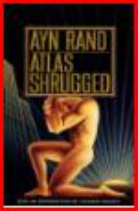
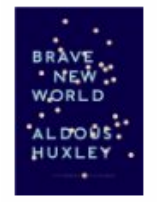

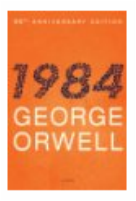
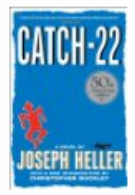

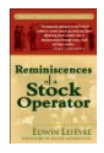
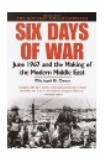

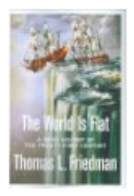

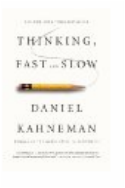
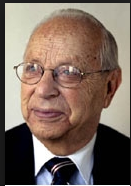
 RSS Feed
RSS Feed
